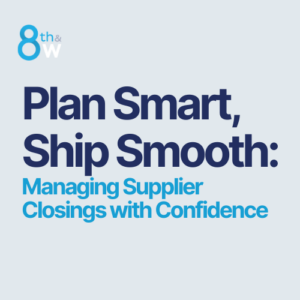Derek Ridenoure and Teresa Warren talked about the Walmart Supplier Scorecard in this week’s Saturday Morning Meeting.
“It is a one-page document that has every component on it that’s important to the buyer,” Warren explains. “A buyer can pull that five minutes before walking into a supplier meeting. And very frequently does.”
A Supplier Scorecard may be a simple, one-page document, but it can be pulled with various filters that show different time periods. Suppliers often have a glance at the scorecard and feel that things are generally looking good — but a supplier will be looking for surprises.
As we’ve often mentioned, it’s the outliers in your data that tell the most about opportunities for your business, so suppliers look for outliers and those pieces of data that stand out are likely to be the ones they ask about… not the things that are going pretty well.
“So, as you walk into a supplier meeting,” Warren says, “if you have not pulled your supplier performance scorecard, you could be caught off guard.”
Suppliers should therefore pull their supplier scorecards before buyer meetings. But the scorecard does more than just give you a heads-up about what your buyer might want to discuss.
From the buyer’s perspective, a good supplier partnership is based on the profitability to Walmart of a supplier’s business rather than the business’s internal profitability.
“You do want to look at your profit dollars this year over last year and your sales dollars this year over the last year,” says Warren. “But what’s really important is that you look at your profit percent to sales… Are you growing your profit at the same rate or better than your sales? And typically you do want to grow that profit at a faster rate than sales.”
Inventory, on the other hand, should grow at half the rate of sales, as a rule of thumb. Warren brought up GMROII, a key concept for suppliers.
Gross Margin Return on Inventory Investment describes the return on each dollar spent on inventory. When Walmart spends a dollar on inventory with you, the supplier, what is their return on that dollar they spent with you?
“GMROII is really about looking at the efficiency,” Warren explains. “Walmart’s looking at their investment in your inventory as a supplier. Is that paying off for Walmart?”
The number can vary at times when inventory is being built up for seasonal needs, Warren says, “but typically over time it should be fairly consistent. And if you are taking an active role in managing your inventory levels, in managing the profitability, getting in and examining where your markdowns are coming from, monitoring those, than that will solve any questions that could come up on GMROII.”
The conversation just touched the surface of the information available through the Supplier Scorecard and the calculations that can bring the information to life in the form of actionable data.



